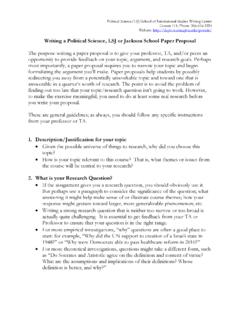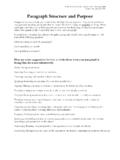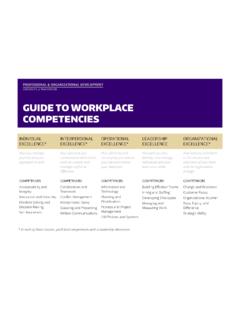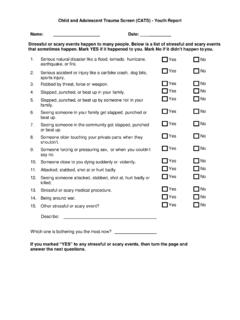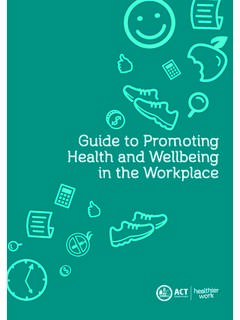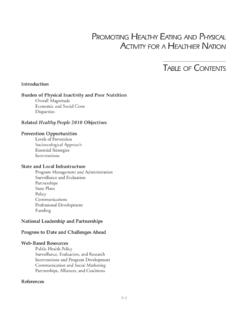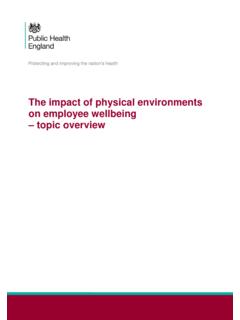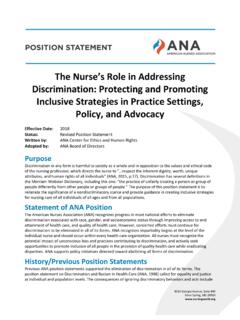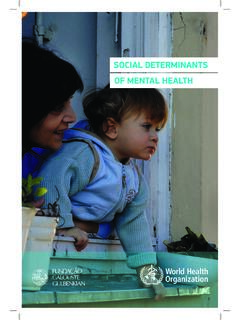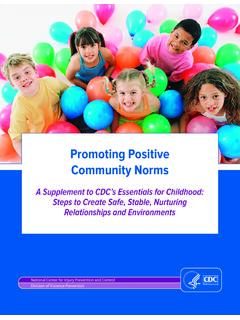Transcription of FAMILY TOOLS Module 2 Promoting Positive Parenting
1 FAMILY TOOLSM odule 2 Promoting Positive ParentingWorking Together Toolkit 2006 TOOLS Module 2: Promoting Positive Parenting209 Promoting Positive Parenting OverviewThis Module focuses on helping families develop Positive Parenting skills and establish home environments to support children as learners. It also emphasizes the need for families to share information with the school staff about their concerns and goals for children. Research LinkAccording to research conducted by Epstein (2002), parents who work to improve their Parenting skills with the support of schools, community organizations and other resources, can positively impact students, families and educators in a variety of ways including those listed for Students: Balance between time spent doing chores, other activities and homework Respect for self, parents and FAMILY Awareness of importance of school Responsible behavior and ownership of learning Positive attitudes, higher grades and high attendance in schoolResults for Families: Understanding of child growth and development.
2 Birth - adolescence - young adult Support for children as learners at each grade level Understanding of teacher roles and responsibilities Exchange of information between educators and parents about concerns and goals for children Support for health, safety and nutrition of childrenResults for Teachers: Understanding of families goals and concerns for children Respect for families strengths, needs and efforts Awareness of own skills to share information on growth and development Completed homework assignments Increased parental involvement Improved student attendance La memoria de la ni ez dura hasta la vejez. A child s memory lasts a lifetime. - Spanish DichoFAMILY TOOLS Module 2: Promoting Positive ParentingPositive ParentingFamily Tools2 Working Together Toolkit 2006 Practices to Promote Positive ParentingEpstein (2002) shares sample practices parents can use to establish home environments that support their children as learners: Never do your child s homework or projects yourself.
3 Instead, make it clear that you re always available to help or answer any questions. Review your child s homework nightly, not necessarily to check up on him or her, but to make sure your child understands everything. Make sure your child knows what to do and who to contact in the case of an emergency. Inform your child s teacher about any conditions that may affect how your child learns. Set firm but kind expectations that your child should start tackling on his or her own. This reinforces independence and encourages him or her to accept a certain level of responsibility. Your child will learn that others will set expectations and that he or she can meet them. New Mexico Teacher CompetenciesGetting better at what schools do requires a lot of extra effort and help. For teachers, this means participating in professional development that helps them reach to a whole new level of teaching.
4 Improving teacher quality through professional development improves learning for all of our Mexico teachers are required to meet nine teacher competencies. The New Mexico 3-Tiered Licensure System provides a structure for documenting teacher qualifications. The No Child Left Behind Federal Act requires that teachers who teach the core academic subjects and special education must be highly qualified as defined by the New Mexico Public Education teacher competency areas for Level III (Master Teacher) related to Positive Parenting are listed below. Teachers work together with families to create Positive learning environments. Teachers work together with students and families to build a Positive learning community in the classroom. Teachers use knowledge of specific school, FAMILY and community resources that support Together Toolkit 2006 TOOLS Module 2.
5 Promoting Positive Parenting211 Parent/ FAMILY Reflection on Positive ParentingUse this checklist to rate the school in the area of Positive Parenting partnerships and think about specific questions and actions you can take to improve Parenting Somewhat AgreeStronglyAgreeSpecific questions toask at schoolActions to take to improve parentingI receive useful information from the school about my child s physical, emotional and social can go to the school for information and there is someone there to provide me support and discuss what is going on with my feel that the school staff respects and values me as a have high expectations for my child, in school and in am comfortable sharing my hopes and dreams for my child with school staff. I have access to the Parent Room or Resource Center and always feel welcome and comfortable TOOLSM odule 2 ResourcesWorking Together Toolkit 2006 TOOLS Module 2: Promoting Positive Parenting213 Resource 1 Worth a Click article titled What Parents Can Do about Bullying offers practical advice on the Welfare League of America site offers links to resources and advice for parents of children of all ages.
6 The resources are divided into different categories to make access easy. A FAMILY Guide to Keeping Youth Mentally Healthy and Drug Free at families of middle and high school students, this site has practical advice and information to help parents with their adolescents. Healthier Schools New Mexico site highlights the coordinated school/health model from the State of New Mexico. Kid s Health - For Parents web site from Kid s Health includes topics on Talking to Kids, Learning and Education and FAMILY Health site includes a fact sheet for parents with some tips for Positive of Child Development: New Mexico Children, Youth & Families Department - New Mexico can find information about networking, resource awareness and technical assistance for child care professionals, parents and health educators. Information is offered on child development, health and selecting quality child Reaching Reaching Out is directed at helping families learn to make informed decisions about the care and education of their children.
7 This site includes information on special education issues that parents face, advocacy information and early intervention Smart web site offers everything from help with homework to tips for talking with children about Parenting - Peace Begins at web site has many resources for parents on Parenting and Positive discipline including articles, books and Tolerance site is for anyone interested in creating communities that value diversity. It contains pages for teachers, parents, teens and TOOLS Module 2: Promoting Positive ParentingPositive ParentingFamily Tools2 Working Together Toolkit 2006 Resource 2 Ten Tips for Successful ParentingParenting is the most important job you will ever have. It is also one of the most challenging. Your job of Parenting changes as your children grow and mature requiring you to adjust to the needs and ages of your children.
8 Use the following tips to help guide your Parenting in healthy and Positive ways. 1. Celebrate the Positive Recognizing children for their effort is as important as the actual effort. For example, if your child has just folded the laundry, celebrate that effort and accomplishment even though it may not be folded exactly the way you might have done it. 2. Take Time to Talk and Really Listen Encourage children to talk openly and let them know that talking through their feelings is a healthy way of expressing themselves. Provide children with the words and be a role model by talking about your own feelings. 3. Use Discipline, Not Punishment Discipline is a method of teaching children life-long responsibility and acceptable behaviors. Punishment, on the other hand, tends to force children to behave a certain way and does not allow for children to be responsible for their own behavior.
9 The use of natural and logical consequences when children make mistakes or misbehave allows for discipline that teaches responsibility and life-long learning. 4. Teach Responsibility Constructively Teach responsibility by giving children frequent opportunities to practice making decisions about what he or she needs to do in a given situation. For example, instead of saying You made a mess, you left your dishes on the table and you need to take them to the sink and rinse them. Try saying, The table is a mess, what do you need to do to get it cleaned up? 5. Separate the Child from the Behavior Never tell a child that he or she is bad. This really hurts a child s self-esteem. Communicate to your child that it isn t that you do not like him or her, but it is the behavior that you are unwilling to tolerate. For example, instead of saying, You are acting like a baby, try saying, I know you are upset but I can understand you better if talk to me in your regular voice.
10 Your child must know that your love is unconditional and although you may be upset with his or her behavior, it does not affect your love for him or her. 6. Actions Speak Louder than Words If you find that your child has stopped listening, it is because, on average, we give our children over 2000 commands per day! They stop listening when they feel we are nagging or yelling. Instead of telling your child a third or fourth time, think about what action you could take. For example, if your child continues to throw his towel on the bathroom floor rather than hang it up, instead of doing it for him or yelling at him one more time, simply remove the towel or leave it in a heap on the floor. It will either be gone or still damp the next time and will better deliver the message of why it is important to hang it Together Toolkit 2006 TOOLS Module 2: Promoting Positive Parenting215 7.




